WILLIAMSBURG HASIDIC STUDENTS GUIDE TO









As an Orthodox Pratt student, something I have noticed is an extreme disconnect between the Pratt community and the Hasidic community that is right next door. Although I am not Hasidic, I do consider myself to be Ultra-Orthodox. This means that I follow many of the same religious laws and traditions that the Hasidim in Williamsburg do. Due to that, I have had a unique experience of being in both worlds. I attend school in Pratt as a committed student, but I have a rich family and religious life at home. Although I might not look like the Hasidim, I follow most of the same modesty rules and fit in when I walk down Myrtle. Williamsburg is home to the largest and oldest population of Jews in NYC.
I always find it surprising when I explain to a fellow student my need for kosher food and they respond “where do you get that?” because I am just walking about 5 blocks down to get to the largest kosher eatery in Brooklyn, called Ice Cream House. Just a short walk to Bedford, and I have reached a mecca of kosher food and Jewish owned stores. The choices overwhelm me!
A report from the JDL came out this year stating that Anti-Semitism is the highest it has ever been in NY. I believe that a way to lower that is through awareness. I think it’s crazy that so many students don’t know anything about their neighboring community. There is so much to learn from the community on the topic of family, tradition and staying true to your beliefs. It is also extremely unfortunate that if people do know things about the community, it is mainly through a warped view of shows they have seen on Netflix.
My goal for this project is to spread awareness and respect for our neighboring community. Ignorance can no longer be an excuse. My goal is that ignorance should no longer be an excuse. As Pratt grows larger, so does the Hasidic community. It has gotten to the point that a Hasidic building is now directly across from the Pratt parking lot. I believe that I am in an extremely unique position to educate from a point of understanding. At this point in my schooling, I have gotten used to explaining my religion in simple terms to my curious classmates. As Vice President of the JSU in Pratt, I have tried to expand the Jewish community on campus and advocate for my fellow students. Therefore, I think that I am the perfect vessel for this intervention and introduction.
I hope that this guidebook will open a world for you that was next door all along. Together we can create a world of love and inclusion, and learn to research before accepting harmful stereotypes.
Hasidic Williamsburg is a vibrant and unique Ultra Orthodox Jewish neighborhood in the heart of Brooklyn, New York, known for its rich religious and cultural heritage. It is home to tens of thousands of Hasidic Jews who adhere to strict religious and cultural customs and traditions that have been passed down through the generations.
While the neighborhood can seem intimidating to outsiders at first, with its insular customs and practices, a closer look reveals a warm and welcoming community that is proud of its traditions and eager to share them with others.
Yiddish- A combination of German and Hebrew
SOME HELPFUL + COMMON YIDDISH WORDS
Vos is Nayis
Whats the news; what’s up
Chutzpah
Chutzpah is the quality of audacity, for good or for bad.
Kvetch
to complain or grumble
Schlep
to carry something heavy or drag something along
Klutz
a very clumsy person,someone who is consistently falling.
Cheshbon
a detailed list, or accounting to figure something out
Meidel
Young Girl
Yingel
Young Boy
Kinderlach
Group of little kids
Mammeh + Tatteh
Mom and Dad
Bubbeh + Zeydeh
Grandma and Grandpa
There are 100,000 Jews in Williamsburg

Was originally more secularized American Jews leaving overcrowded conditions in Lower East Side for the green pastures of Brooklyn.
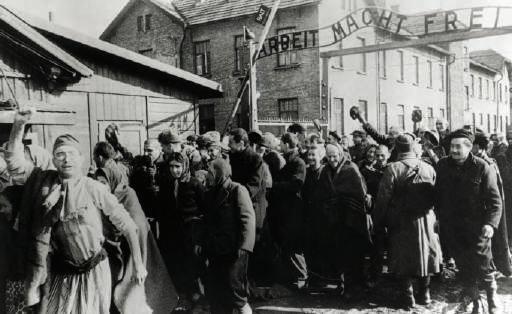
The Holocaust was a systematic genocide of millions of Jews, as well as other marginalized groups, carried out by the Nazi regime during World War II. The Nazis' ultimate goal was to create a "pure" Aryan race and eliminate anyone they deemed inferior or undesirable from society.
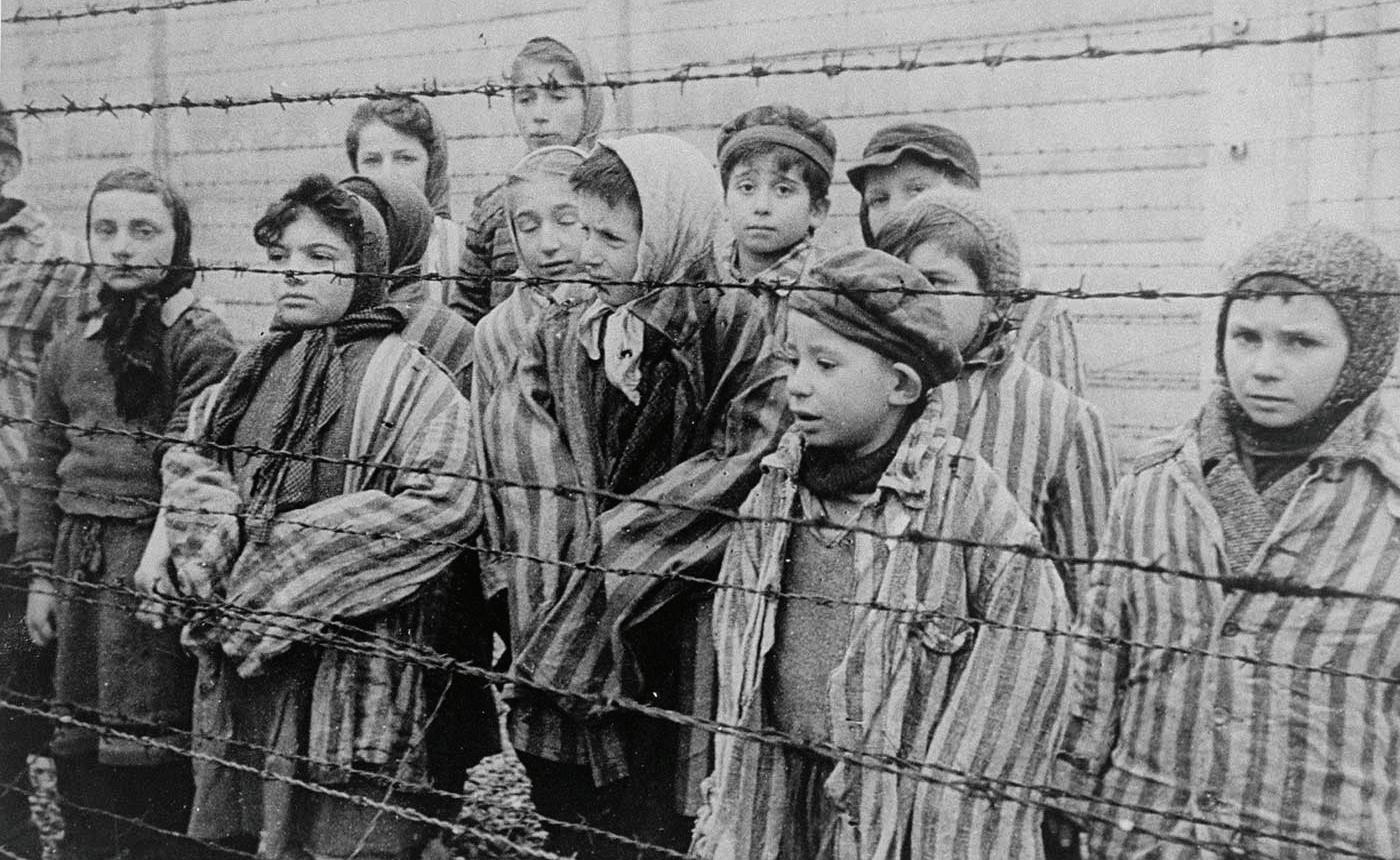
To achieve this goal, the Nazis created a network of concentration camps and death camps where millions of people were tortured, experimented on, and systematically murdered in gas chambers and other horrific ways.
Many post-Holocaust refugees came to New York wanting to restart their lives.
Give me your tired, your poor, Your huddled masses yearning to breathe free, The wretched refuse of your teeming shore.
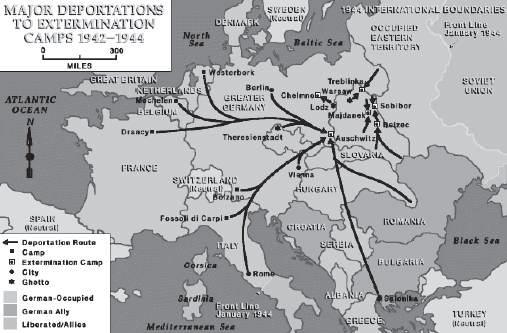
At the end of the war, the Nazis were getting anxious about the Allies advancement. As a result, they tried to round up as many Jews as fast as possible. All of these survivors do not have numbers tattooed on their arm as a sign of their rushed capture.
The Hungarian Jews were rounded up by the Germans towards the end of the war, 1943-44, so there was a much higher survival rate.
”
At the movement’s height in the 19th century, it is estimated that roughly half of Eastern European Jews were Hasidic
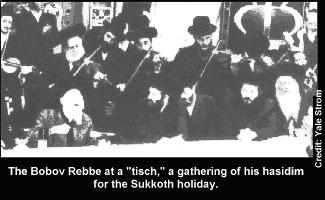

Before the Holocaust, the Hungarian Jews were fighting modernity and tried to keep it out because they felt that it was a new threat to Orthodoxy.
After the war, they continued this fight in the hospitable, safe United States, which had freedom of religion.
They continued the same fight for keeping out modernity, and set up an enclave in Williamsburg, which at that time had cheap real estate due to significant social and economic upheaval, including widespread poverty, crime, and gang violence, which was all they could afford.
Over time, the Hasidic community in Williamsburg grew and became more insular, with its own schools, synagogues, and businesses catering to the unique needs and customs of the community.

Today, Hasidic Williamsburg is one of the largest and most vibrant Hasidic communities in the world, with a population of tens of thousands of people who adhere to strict religious and cultural customs and traditions. The neighborhood is known for its bustling street life, strict mode of dress and rich cultural heritage.
NOT MUCH HAS CHANGED... WHO ELSE CAN SAY THAT? NOT MUCH HAS CHANGED... WHO ELSE CAN SAY THAT?
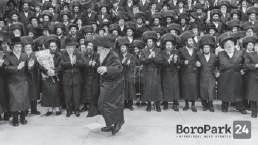
It was founded by the Baal Shem Tov, a Jewish rabbi, as a way to further his disciples connection with God.
Baal Shem Tov urged his disciples to develop a personal relationship with God.
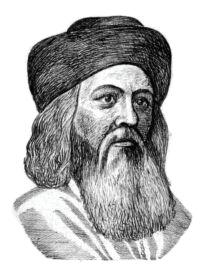
It deemphasized Jewish study in favor of Jewish practice, particularly prayer, and was a direct response to the cultural phenomenon of the times of self expression and revolution.
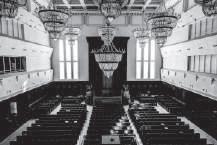
In Hasidic communities, the grand rebbe functions not merely as a communal leader and spiritual authority, but often holds an almost mythical status among his followers. Rebbes are commonly petitioned for help in situations of ill health or financial distress, their advice is sought on various personal matters, and they are often seen as something akin to a direct conduit to God.


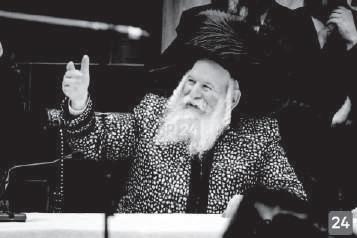

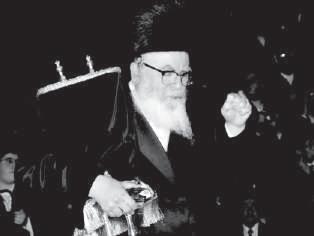
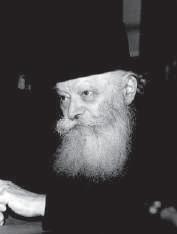
This definition actually predates the modern hassidic movement by many centuries: according to the Talmud, a “chassid” is a person who fulfills his or her duties toward G‑d and fellow “beyond the line of the law”—beyond what is commanded and obligatory.
This is the defining factor between Orthodox Jews, and Hasidic Jews. While all Hasidic Jews are Orthodox, not all Orthodox Jews are Hasidic. Hasidic Jews are commonly called “Ultra” Orthodox, meaning they go beyond what the Bible mandates of them.
Another defining aspect is that they serve God with the Joy found in Judaism. Joy is important, as a fundamental element of the Divine service in its own right. The hassid is full of life, joy and passion.
This is represented by song and dance. There is also a concept of “beautifying the commandments” which Hasidim pride themselves in. This means saving money to buy the best food for Sabbath, buying nice clothes and decorating the house and synagogues for every holiday.
Baal Shem Tov Founder of HasidusBefore World War II, hundreds of Hasidic sects flourished in Eastern Europe, typically in small towns and villages whose names were eventually adopted as the name of the sects themselves: Bobov, Satmar, Ger and many others.
Satmar Hasidim - One of the largest Hasidic groups in Williamsburg, with a strong emphasis on Torah study, strict adherence to traditional Hasidic practices, and opposition to modern secular influences. Satmar Hasidim are known for their distinctive style of dress, with men wearing long black coats and wide-brimmed hats, and women dressing modestly with head coverings and long skirts.
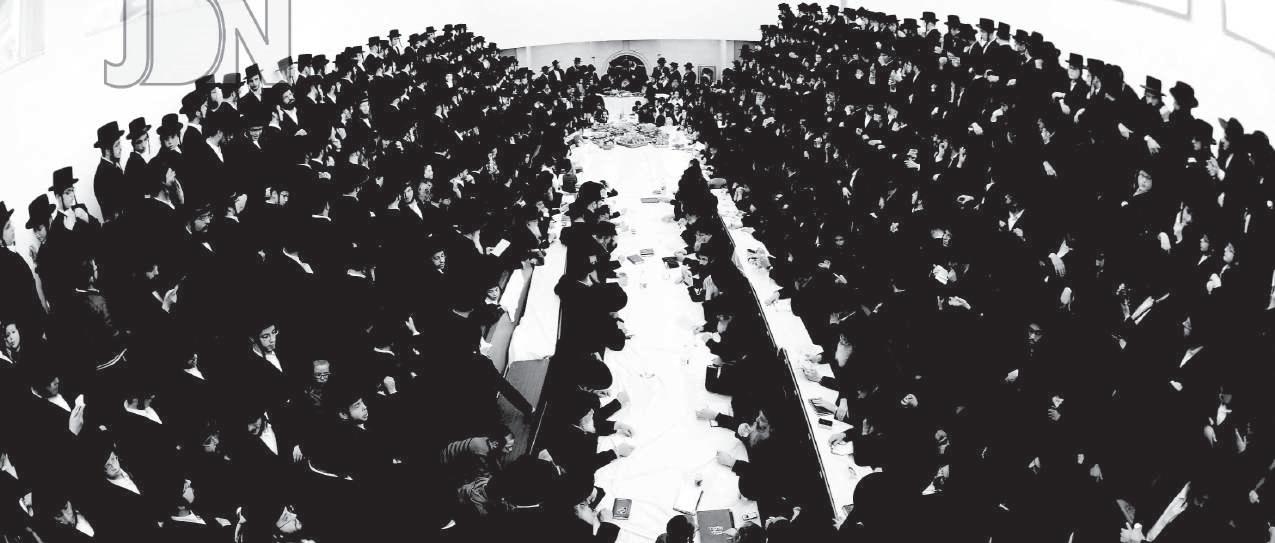
Belz Hasidim - Belz Hasidim are known for their focus on prayer, music, and joyous celebration of life. They place a strong emphasis on family values.
Bobov Hasidim - Bobov Hasidim are known for their emphasis on community involvement, charitable works, and Torah study. They have a strong sense of identity and pride in their Hasidic heritage and culture.
Vizhnitz Hasidim - Vizhnitz Hasidim are known for their strict adherence to Jewish law and emphasis on prayer and Torah study. They have a tradition of large families.
Skver Hasidim - Skver Hasidim are known for their emphasis on community, family, and devotion to the Rebbe (spiritual leader). They place a strong emphasis on prayer and Torah study.
You might hear someone say they are a __ Hasid. These are some of the main ones. Each Sect has its own Grand Rabbi and infastructure. The Rabbis follow a dynastic structure, meaning son follows son.
Orthodox Jewry is defined by a deep connection to God by abstaining. The Sabbath is a core part of the Jewish religion, a time in the week set aside for connection and rejuvenation
A weekly 25-hour observance, from just before sundown each Friday (between 4-6 in the fall, and 6-9 in the summer) through the completion of nightfall on Saturday (5-7 in the winter and 7-10 in the fall) .
Shabbat is more than just a day off from labor. It is a day of physical and spiritual delights that is meant to illuminate certain key concepts in the traditional Jewish perception of the world.

Jews believe that God created the world in 6 days, and rested on the 7th. They emulate God in this way and rest on Sabbath, abstaining from all acts involved in creation.
The sages of the Talmud enumerate 39 forbidden creative acts that Jews do not do on Shabbat. The sages explain that each of these acts is a father, with offspring that are also forbidden due to their intrinsic similarity to the parent act.
On the Sabbath, Jews cannot:
Drive
Turning on or off lights
Operate electrical appliances (including phones)
Cook
Write Cut Bake Sew
Conduct business
Play instruments
Use a computer
Do Laundry
Use hot water (bathe, wash dishes)
On Thursday, you will begin to see many people making large purchases at the Kosher groceries. Schools let out early on Friday, between 12-1, and everyone will be hustling, getting ready to greet the Sabbath. During the summer months, many kids will make little stands and carnivals outside their homes, to keep the kids busy and let their mother prepare.
On Friday night, everything will stop, and it might feel more peaceful. There will be less cars on the street, and all the stores will close.
Everyone puts on their finest clothes, girls will put on pretty dresses, women will usually put on a white scarf/ headcovering and a nice outfit, boys will wear suits and the men will put on a long black frock and a beaver fur hat called a streimel. This will stay like this until Saturday at sundown.
All the stores and businesses will be closed. If you make an order by a store, or plan to pick something up, make sure it is not on Friday night or Saturday.
Don’t be insulted if someone calls you in to their house and asks you to do something for them-ex; turn on a light, fix the AC, rip something, or turn off an alarm. There is a concept that a Jew can ask a non-Jew to do something for them if it is causing them pain, or a danger. And know that they cannot pay you, but will try to repay you in some way.
Preparation:
begins as early as mid-week in some households,and includes shopping, cooking, cleaning, showering and getting dressed in dressy clothes.
Arrival:
The woman of the house welcomes the Sabbath Queen into her home by lighting two candles. Many women light more, one for each kids plus the two for her and her spouse. The men then go to synagogue and welcome the Sabbath there with song and dance. If you walk by a synagogue on Friday night, you will hear the songs of Sabbath, melodic without instruments.
Friday Night:
Once the men come home from synagogue, the family sits down to a three course meal that begins with a special blessing over wine or grape juice called Kiddush, and bread called Challah. Family meals are occasions for singing, studying, and celebrating together, as well as for consuming distinctive Shabbat foods.


Saturday:
The men and women head to synagogue early Saturday morning, where they sing special prayers and read that weeks passage from the bible, called the Parsha. The family then comes home and sits down to a large lunch, traditionally with egg salad, chopped liver, salads and a hot beef and bean stew (like a chili) that had been sitting in the crockpot since Friday morning called Chulent.There is another prayer midday,as well as a light meal.
Departure:
The Sabbath ends with another prayer in the synagogue at the emergence of three stars. The men then come home and say a prayer on a lit torch, in remembrance of Adam discovering fire on Saturday night, and a prayer on a sweet smell. Many stores will open Saturday night, and people will have a meal with bread and hot food called “Melave Malkah” escorting the Sabbath queen out.
As there is so much more to explain and learn, here are some links that can be helpful:
The Jewish culture is deep rooted in celebration. There are many different festivals celebrated over the course of the year, all discussed in the bible. Each has different requirements and commandments.
The Jewish calendar is Lunar. This is different from the english/Gegorian one which is solar. For this reason, Jewish holidays will fall out on a different engish date every year. Below is a calendar with the dates of this year. A quick google search of “what Jewish holiday is it today” will usually give you the answer quickly.
Purim is a Jewish holiday that commemorates the salvation of the Jewish people from Haman's plot to annihilate them in ancient Persia. The holiday is celebrated by reading the Megillah (the Scroll of Esther), giving gifts of food and drink to friends, giving charity to the poor, and participating in a festive meal.
what to expect:
expect to see lively and colorful Purim celebrations, with people dressed up in costumes, dancing in the streets, and exchanging gifts of food and drink. The streets are adorned with colorful decorations, and many synagogues hold Purim parties and events for their congregants. Visitors should also expect to hear traditional Purim songs and chants.
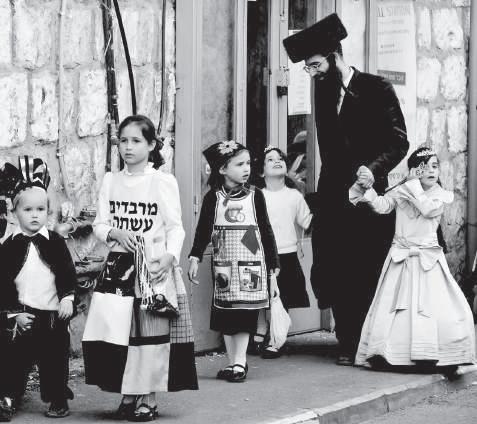
8 DAYS
Passover is a Jewish holiday that commemorates the liberation of the Jewish people from slavery in ancient Egypt. The holiday is celebrated by refraining from eating any leavened products, such as bread and pasta, and instead eating matzah, an unleavened bread.
what to expect:
Preparations for Passover begin weeks in advance, with stores selling kosher for Passover food and household items. Many people deep clean their homes and cars, to get rid of any crumbs. As the holiday approaches, there is a tradition of burning chometz, or any leavened products that cannot be consumed during the holiday .People gather to burn any remaining chometz in a symbolic gesture of removing all traces of leavened products from their homes.
The most important part of Passover is the seder, a ritual feast that takes place on the first two nights of the holiday. Families gather for the seder, where they retell the story of the Exodus from Egypt through the night and eat traditional Passover foods such as matzah, bitter herbs, and charoset. During Passover, many businesses in Williamsburg are closed or operate on reduced hours, as people focus on observing the holiday and spending time with their families.
Passover is split into three parts: 2 days of a Sabbath -like holiday, followed by 4 intermediate days, were families celebrate by going on trips. Work can be done. It culminates with another 2 sabbatth-like days.
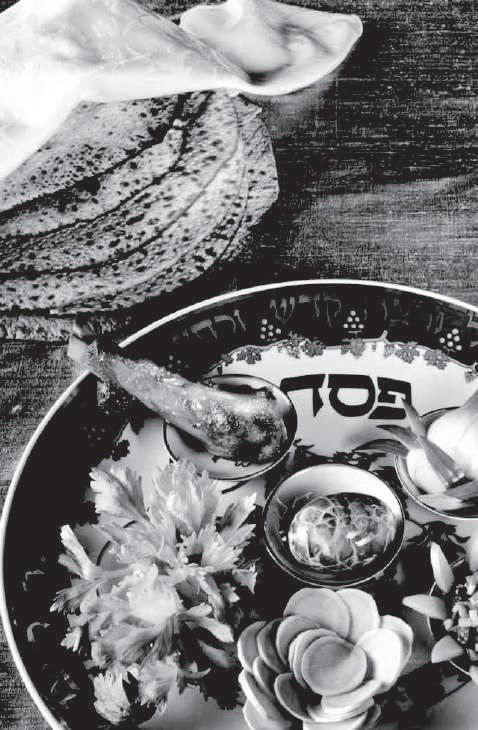
Lag BaOmer is a Jewish holiday that falls on the 33rd day of the Omer, a period of mourning for thousands of Jewish students who died during this period between Passover and Shavuot.
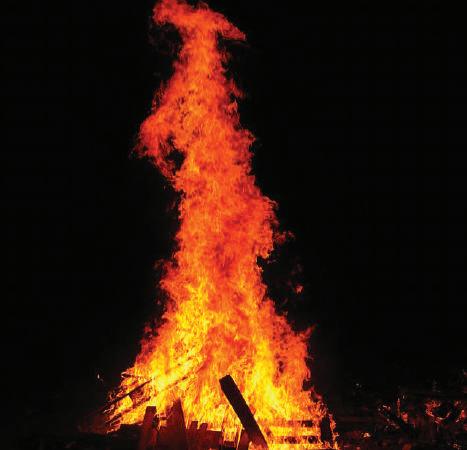
what to expect:
large bonfires being lit in public areas, with children and adults dancing and singing around them. Fire is seen as a symbol of light and spiritual illumination, and the bonfires are often seen as a representation of the light of Torah, which guides the Jewish people. The holiday also marks theday that these students stopped dying, as well as the anniversary of the passing of Rabbi Shimon bar Yochai, a renowned Jewish scholar, whose disciples lit bonfires to honor his memory and the light of his teachings. Today, the bonfires on Lag BaOmer symbolize the importance of passing down Jewish traditions and knowledge from one generation to the next.
Shavuot is a Jewish holiday that commemorates the giving of the Torah to the Jews at Mount Sinai. It is celebrated 50 days after Passover and is traditionally marked by staying up late studying the Torah, eating dairy foods, and participating in festive prayers and services.

what to expect:
see lively celebrations, with many synagogues holding special prayer services and Torah study sessions. The holiday is also marked by the custom of eating dairy foods, such as cheese blintzes and cheesecake, which symbolize the sweetness of Torah. and decorating with flowers. Visitors may also witness the reading of the Book of Ruth, which is traditionally read on Shavuot and recounts the story of a convert to Judaism who became the ancestor of King David.
Bi-ahv”
DAY
Tisha B'Av is a Jewish fast day that commemorates the destruction of the First and Second Temples in Jerusalem, as well as other tragedies throughout Jewish history. It is a solemn day of mourning, marked by fasting, prayer, and the reading of the Book of Lamentations.
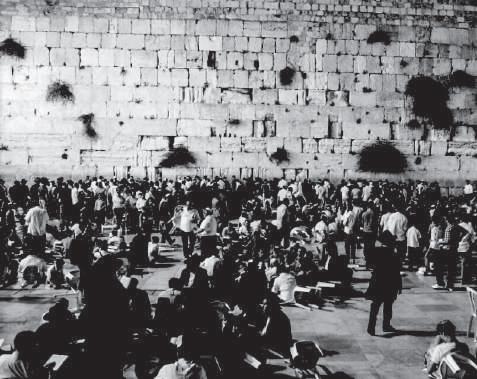
what to expect:
a somber atmosphere throughout the day. Many observant Jews refrain from eating, drinking, bathing, or engaging in any pleasurable activities on this day. The Book of Lamentations is read in a mournful tune and communal prayer services are held throughout the day, including a special evening service called Eicha.
2 DAYS
Rosh Hashanah is the Jewish New Year and marks the beginning of the High Holy Days, a period of reflection and repentance that culminates with Yom Kippur. It is a time for introspection, renewal, and new beginnings.

what to expect:
streets filled with people dressed in their finest clothing, on their way to synagogue for special prayer services. The shofar, a traditional Jewish horn, is blown throughout the day, reminding people to reflect on their actions and seek forgiveness. Families gather for festive meals, which often include symbolic foods such as apples dipped in honey to represent a sweet New Year.

Yom Kippur is the holiest day in the Jewish calendar and is a day of fasting, prayer, and repentance. It is a time for atonement and seeking forgiveness for sins committed throughout the year.
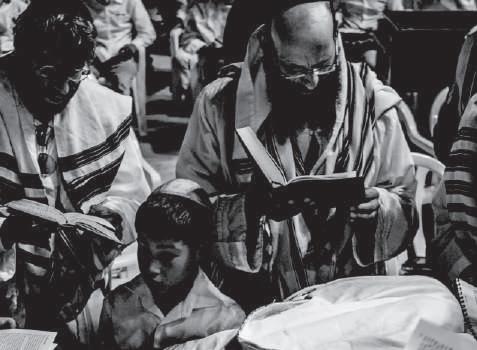
what to expect: SUKKOS
The streets quiet and subdued, as Jews observe the day by abstaining from work, food, and drink. Synagogues hold special prayer services the entire day. The men wear white over-coats and the women will wear all white, to look like angels, since the day is believed to elevate humans to a godly status. The day concludes with the sounding of the shofar, marking the end of the fast and the beginning of a new year.
Sukkot is a Jewish holiday that celebrates the harvest season and commemorates the wandering of the Jews in the desert after the Exodus from Egypt. During the holiday, Jews build and decorate temporary structures called sukkahs, which represent the dwellings used by the Israelites during their journey in the desert.
what to expect:
Wooden huts in every balcony and on the street, adorned with fruits and flowers. Families and friends gather to eat, drink, and celebrate in the sukkahs, which are also used for prayers and other religious observances. The holiday is marked by the waving of the lulav and etrog, a ritual that symbolizes the unity of the Jewish people and the abundance of the harvest season.
Sukkot is split into three parts: 2 days of a Sabbath -like holiday, followed by 4 intermediate days, were families celebrate by going on trips. Work can be done. It culminates with another 2 sabbath-like days, which celebrate the Torah through song.

8 DAYS
“Chah-nuu-kah” early-late December
Hanukkah is a Jewish holiday that commemorates the re-dedication of the Holy Temple in Jerusalem after it was desecrated by the Greek Empire. The holiday is marked by the lighting of the menorah, a eight-branched candelabrum, over eight nights.

what to expect:
the streets decorated with Hanukkah lights and festive decorations, and families and friends gathering to light the menorah, play games, and exchange gifts. Traditional foods such as latkes and sufganiyot are also enjoyed during the holiday.

“Hach-no-sas Seifir Toe-Rah”
A Hachnosas Sefer Torah is a joyous event in the Jewish community that celebrates the completion and dedication of a new Torah scroll.
what to expect:
a procession of community members dancing and singing as they carry the new Torah scroll, adorned with ornate coverings and silver ornaments, through the streets. The procession is often led by a rabbi or other community leader, and members of the community are invited to participate in the joyous celebration. The dedication of a new Torah scroll is a significant event in the Jewish community, symbolizing the importance of the Torah as the foundation of Jewish life and learning.
“Chah-suh-nah”
A Hasidic wedding is a joyous and lively event in the Orthodox Jewish community, celebrating the creation of a new unit.
what to expect:
a large gathering of family and friends dressed in traditional Hasidic attire, including black suits and hats for the men and modest dresses and head coverings for the women. The wedding ceremony is usually held outside under a chuppah, a traditional canopy, and is presided over by a rabbi. After the ceremony, the celebration continues with food, music, and dancing.
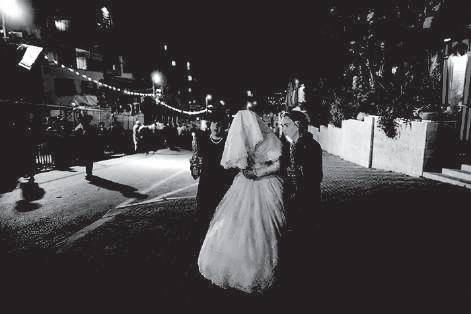
There are many festivities in the Jewish life, most centered around the circle of life, thanking God for new beginnings
Is customarily said by thse celebrations, such as by weddings, Birthdays, Babies, Anniversaries and engagements.
Traditional Hasidic communities adhere to strict gender roles, with men and women expected to adhere to different religious, social, and domestic duties.

Women are often responsible for maintaining the household, raising children, and being the emotional pillars of their home. Religion is dependant on the mother.
Men are generally encouraged to study Torah and religious texts and provide food, money and physical support to their families.
While gender roles are generally strict in Hasidic communities, there is also a sense of mutual respect and collaboration between men and women, with both genders contributing to the well-being and growth of the community as a whole.
Do Hasidic women have to cover their hair?
Yes, married Hasidic women typically cover their hair with a wig, hat, or scarf as a sign of modesty and respect for their husbands. A common myth however, is that many shave their heads. This is an example of a sensationalist rumor. While a small minority who are part of the strictest sect do, MAJORITY of women in Williamsburg do not shave their heads underneath their headcovering.
Are Hasidic women allowed to work outside the home?
Yes! Many hasidic women work outside their homes working in many different fields, such as medical billing, teachers, therapists, saleswomen, expediters, and entrepreneurs. At the same time, women are expected to prioritize their family and household duties and raise their family. There is a lot to learn from their work-life balance.
Judge Ruchie Frier is a highly respected figure in the Hasidic community and an advocate for women's rights within that community. She is known for her work as an acting New York Supreme Court judge , where she has gained a reputation for fairness, compassion, and dedication to the families she serves.
Are Hasidic
Education is highly valued in Hasidic communities, and women's education often focuses on practical skills such as cooking and homemaking, and academic pursuits. There are many Hasidic women who have pursued higher education and achieved success in their chosen fields. There are also many Jewish higher education accredited programs that make it possible to get a strong degree in almost every field while not compromising any beliefs or modesty issues.
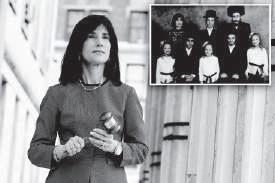
Are the marriages forced or Arranged?
No! There is a very strict difference between an arranged marriage and an arranged meeting. In Hasidic culture, an arranged meeting is a process in which a matchmaker, often someone within the community or a family member, introduces a young man and woman who are both looking to get married. The matchmaker arranges for the couple to meet in a supervised setting, to see if they are compatible and interested in pursuing a relationship. If both the girl and boy like each other and feel a sexual pull, the matchmaker proceeds with the formal process of making arrangements for the marriage.
GENDER ROLESModesty is a central value in Hasidic culture, and dress is seen as a reflection of that value. Clothing is chosen with the intention of covering the body in a way that is both modest and dignified. Hasidim beleive that they are the royal court of God, and dress in a way that is similar to what the royals of England wear to show their esteem.
Hasidic dress is distinct and recognizable, with men over 13 typically wearing long black frocks, white shirts, and black hats, while women often wear modest dresses or skirts with long sleeves and high necklines.
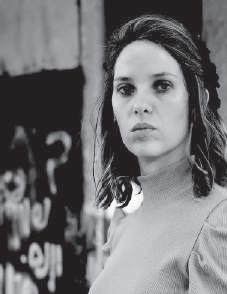
Boys over the age of three get a short haircut, with long sideburns, called “peyos” left out by the ears. They wear a Yarmulke, (skullcap) on their heads to remind them on Gods presence at all time, and wear a stringed, cornered undershirt under their clothes.

Traditional Hasidic dress is often influenced by the fashion trends of Eastern Europe from the 18th and 19th centuries. Clothing styles have changed over time, but the emphasis on modesty and dignity has remained consistent.
On the Sabbath, there are special clothes and accessories that men and women wear. Men will wear Streimels, or large, round, beaver fur hats and black shiny “bekeshes” or frocks. The women and kids will wear formal, dressy wear and the women will wear fancy hats.
Hasidic dress is also a way for people to identify with a particular community or sect within Hasidism. Different groups may have distinct styles of dress that set them apart from others.
Hasidic dress is not just a matter of personal preference or individual expression; it is seen as a way of fulfilling religious and cultural obligations. The way a person dresses is a reflection of their commitment to the values and traditions of the Hasidic community. It is yet another example of Orthodox Jews living life with intention.
Q: Are Hasidic people allowed to wear modern clothing?
A: Hasidic dress is often influenced by historical fashion trends, but it is not necessarily outdated. Many Hasidic people incorporate modern elements into their clothing while still adhering to the principles of modesty and dignity. Many dress very fashion-forward, wearing designer shoes, coats and handbags, while following strict dress-codes.
 Men wear frocks and black hats during the week
Little boys with yarmulkes and tzitzit hanging out
Woman wearing wig and modest clothes
Men wear frocks and black hats during the week
Little boys with yarmulkes and tzitzit hanging out
Woman wearing wig and modest clothes
Family is the cornerstone of Hasidic life, and raising a large family is highly valued. It is common for families to have six or more children.

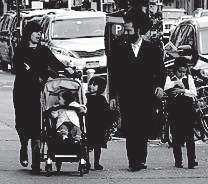
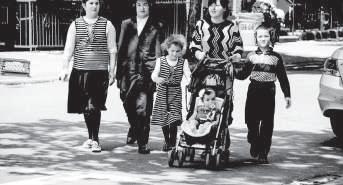
Families are very close-knit, and the older siblings are expected to care for the younger ones. Children are given a lot of responsibility from a very young age.
Parents play a central role in the lives of their children, and there is a strong emphasis on providing for their needs and ensuring their education in both secular and religious studies.
Respect for elders is an important value, and grandparents often play an active role in the lives of their grandchildren.
The Hasidic community places a strong emphasis on charity and helping those in need. Many families donate about 15% of their income to charity, and there are numerous charity organizations within the community.
Volunteerism is also highly valued, and many community members give their time and expertise to various charitable organizations and initiatives.
One example of a charity organization in Williamsburg is the Chesed organization, which provides assistance to community members in need, including food assistance, financial aid, and medical referrals.
Another example is Hatzalah, a volunteer ambulance service that provides emergency medical care to the community. Hatzalah has become a model for other communities around the world.

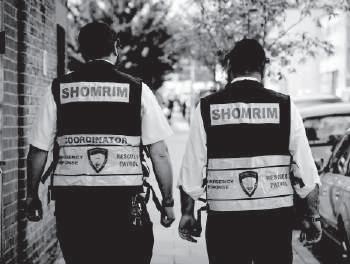

Very large synagogues are synonymous with a Jewish community. Being as there is no “Jewish Architecture” every exterior will look different, but all have the same programatic elements.

Men go to synagogue and pray in groups of 10+ men 3 times a day.
There are special prayers and customs on holiday and the Sabbath.
The schools are gender segregated, with the boys schools being called “Yeshivos” and girls schools called “Bais Yaakov”. The schools interiors look the same as most other private schools.
Each Hasidic sect has its own school. Different Hasidic sects will place emphasis on different subjects

The schools focus half the day on secular studies, such as english, math, science and history, The other half of the day is focused on religous studies, with the boys learning more inside text and the girls focusing more on conceptual, spiritual growth.
Kosher food is a type of food that is prepared in accordance with Jewish dietary laws, which require specific methods of slaughtering animals and prohibit the consumption of certain types of meat, such as pork and shellfish. Another aspect of Kosher is not eating milk and meat together, which comes from the prohibition that “You shall not cook a lamb in the milk of its mother”
Kosher food is significantly more expensive, as included in its price is the payment of a rabbi to ensure its kosher status.
A food is labeled kosher if it has a “Hechsher” or a symbol on the packaging


While traditional Hasidic food has its roots in Hungarian culture, nowadays the kosher food world is advanced and trendy.
TO GO: checkout these kosher eateries: Ice Cream House Panino
Gottleib’s Deli Moishe’s Place
Chesnut Grocery Mozzerella
The boundaries of this community are not officially defined, but generally include the area bordered by Flushing Avenue to the north, Broadway to the east, the Brooklyn-Queens Expressway to the south, and the East River to the west.

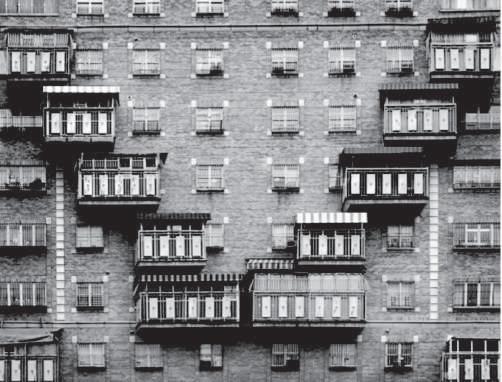
The staggered design of the balconies allows for multiple sukkot to be erected on a single building, creating a unique and festive atmosphere throughout the neighborhood during the holiday.
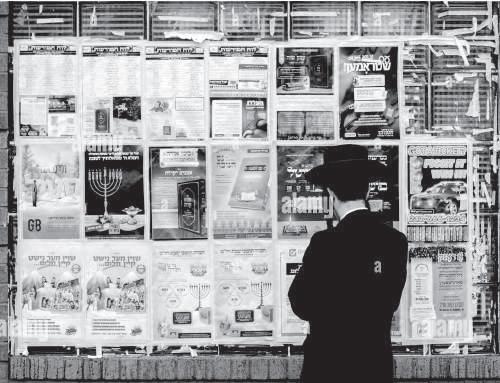
Colorful ads cover the sides of many buildings. These signs are mainly in Yiddish and act as a form of social media. Many are advertising community events, new products and charity organizations.
The main commercial block in Williamsburg. All of the stores are locally owned-small businesses, designed to fit the communities specific needs. The stores on this block include Kosher food stores, modest clothing boutiques, men’s clothing stores, hosiery stores, Judaica stores, kosher pharmacies and much more.

This is a private bus that goes between Williamsburg and Boro-Park, another large Hasidic community in Brooklyn. They are brightly colored, usually advertising furthering of Torah Studies. The users self segregate, because of beliefs. These buses have permits to stop by MTA bus stops and drive in bus lanes.
 The sukkah is only good if the stars can be seen through the ceiling and must not be covered by anything.
The sukkah is only good if the stars can be seen through the ceiling and must not be covered by anything.
You might see a lot of Jewish publications. In the Orthodox world, the printing industry is still flourishing because on Shabbos they cannot use technologyIf you ever want to know what the sign says, use google translate’s camera feature: Yiddish-English
the Hebrew words for separate and for holy share the same root.
Many Hasidic communities, tend to be insular and emphasize separation from the outside world. This is due to a desire to maintain their unique traditions and religious practices, and to protect their community members from negative influences. Hasidic Jews still interact with the outside world , such as through business dealings, secular education, and medical care.
Some Hasidic Jews may choose to limit their exposure to media and technology that they believe could negatively impact their spiritual or moral values. They pride themselves in adapting to technology, but not the culture that comes with it.
Hasidim are skeptical of the media, and the intrusion of outsiders, because they are often unfairly portrayed in a negative light. That is why Hasidim may be reluctant to talk to you .
Women might not talk to men due to strict modesty standards and shyness.
Most of the reluctance to connect with the outside world comes from a deep rooted untrust that comes from the persecution of the Holocaust and overall Anti-semitism.
Hasidic Jews often maintain close ties to their extended families and communities, which may be spread out across different regions or even countries. This can create a sense of connection to the broader Jewish community, while still maintaining a distinct religious identity.


As Jewish students were getting off a school bus in front of their religious school, an individual grabbed the kippah (skullcap) off the head of one of the children. (April 2022; Brooklyn, NY)
A Hassidic Jewish school bus driver was shot with a BB gun by a group of teens while the door to his bus was open. (May 2022; Brooklyn, NY)
125% 580
A Jewish individual was shot with a BB gun by a person driving by in a car while he was walking in front of a synagogue. (May 2022; Brooklyn, NY)
A Jewish teenager who was standing in front of the Chabad headquarters in Brooklyn was approached by a woman and slapped in an unprovoked attack. (October 2022, Brooklyn, NY) While yelling "Hey Jew," an individual shot a BB gun at a person in a highly populated Orthodox Jewish neighborhood. (March 2022; Brooklyn, NY)
Graffiti that read, "Kill Israel and the Jews" and an image of a Star of David was found on the campus of a middle school. (January 2022; Brooklyn, NY)
59%
increase in anti-semitic crimes hate crimes in NYS in 2022 took place in the five boroughs of New York City. Brooklyn was the epicenter of assaults.

Individuals associated with the National Socialist Movement, a Florida based neo-Nazi group, made antisemitic comments while they assaulted a Jewish person who walked past one of their rallies. (January 2022; Orlando, FL) While yelling "Hey Jew," an individual shot a BB gun at a person in a highly populated Orthodox Jewish neighborhood. (March 2022; Brooklyn, NY)
An individual committed a spree of violent assaults over the course of several hours, causing serious injuries to four Orthodox Jewish individuals. (April 2022; Lakewood, NJ)
An individual approached their Jewish neighbor, stated, "You fuckers should have burned a long time ago," and pushed the victim. (July 2022; Los Angeles, CA)
It is important to learn about the positives of the Hasidic community to promote understanding and empathy towards a group that is often misunderstood and misrepresented. Be respectful! Anti-semitism is at all time highs, and its is important to be informed. Together we can promote a culture of inclusivity and love.
A 13-year-old Jewish boy was chased by two teenagers who grabbed the boy's yarmulke off his head. (August 2022; Staten Island, NY)
An individual made antisemitic remarks and yelled "Kanye 2024" before striking a Jewish person from behind, causing him to fall. (December 2022; Manhattan, NY)
As Jewish students were getting off a school bus in front of their religious school, an individual grabbed the kippah (skullcap) off the head of one of the children. (April 2022; Brooklyn, NY)
It is extremely unfortunate that if people do know things about the hasidic community, it is mainly through a warped view of shows they have seen on Netflix.
A Hassidic Jewish school bus driver was shot with a BB gun by a group of teens while the door to his bus was open. (May 2022; Brooklyn, NY)
A Jewish individual was shot with a BB gun by a person driving by in a car while he was walking in front of a synagogue. (May 2022; Brooklyn, NY)
A Jewish teenager who was standing in front of the Chabad headquarters in Brooklyn was approached by a woman and slapped in an unprovoked attack. (October 2022, Brooklyn, NY) While yelling "Hey Jew," an individual shot a BB gun at a person in a highly populated Orthodox Jewish neighborhood. (March 2022; Brooklyn, NY)
good for entertainment, not knowledge

Graffiti that read, "Kill Israel and the Jews" and an image of a Star of David was found on the campus of a middle school. (January 2022; Brooklyn, NY)
The media hates religions of any kind and loves to capitalize on drama. The issue is that while there are a small percentage who are unhappy, in any religion, there is a much higher percentage that love it. But because of how private the Jewish community is most people only get to see a negative side.
Individuals associated with the National Socialist Movement, a Florida based neo-Nazi group, made antisemitic comments while they assaulted a Jewish person who walked past one of their rallies. (January 2022; Orlando, FL) While yelling "Hey Jew," an individual shot a BB gun at a person in a highly populated Orthodox Jewish neighborhood. (March 2022; Brooklyn, NY)
An individual committed a spree of violent assaults over the course of several hours, causing serious injuries to four Orthodox Jewish individuals. (April 2022; Lakewood, NJ)
An individual approached their Jewish neighbor, stated, "You fuckers should have burned a long time ago," and pushed the victim. (July 2022; Los Angeles, CA)
A 13-year-old Jewish boy was chased by two teenagers who grabbed the boy's yarmulke off his head. (August 2022; Staten Island, NY)
There is so much more to learn and discover about the history, culture, and way of life of this unique community. I encourage you to continue exploring and learning about the Hasidic community, and to engage in respectful and meaningful dialogue with members of this community. Together, we can foster greater understanding, empathy, and appreciation for the diverse communities that make up our world.
As times have changed, Jews have learnt that in order to stop the hate, we must use technology in order to connect, inform and educate. Many Hasidic and Orthodox Jews have taken to social media as a platform to introduce outsiders into our community and dispel rumors and myths cast by mainstream media.


@alyssagoldwater
@thatjewishfamily
@rabbiraps
@miriamezagui
@therealmelindastrauss
@thatjinjyjew
@chusidel
@raizyscooking
@jaketurx

@lipaschmeltzer

@thatjewishqueen
Peter Santenello
Frieda Vizel
Shloimie Zionce
While most of these creators are not Hasidic, their pages are a good place to go get reliable information about the Ultra Orthodox Culture